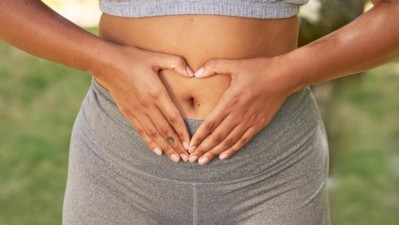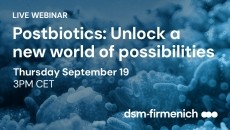Dual approach: Pro- and postbiotic Bifidobacterium Longum ES1 can improve symptoms of irritable bowel syndrome - ADM

Researchers in India found that the pro- and post-biotic Bifidobacterium Longum ES1 can treat IBS-D by modulating gut microbiota in a three-arm, randomised, placebo-controlled trial by ADM.
The researchers recruited patients with IBS ROME IV criteria, which includes recurrent abdominal pain on average at least 1 day a week and accompanied by two or more of the following: Related to defecation, associated with a change in frequency of stool, and associated with a change in form (appearance) of stool. These symptoms must have started at least six months before the diagnosis and have been happening consistently for the past three months.
“Up to 15% of the world's population is affected by IBS-D. A study from the Netherlands showed that over 2,000 Euros goes to treating each IBS patient per year. IBS is important not only because it is common but also because it has significant economic consequences for individuals and society,” said Dr Richard Day, VP Medical Affairs & Clinical Development, ADM Health & Wellness. He was speaking at our Growth Asia Summit held in Singapore from 16 to 18 July.
While IBS is caused by a number of factors such as increased gastrointestinal motility and altered immune function, the gut microbiota is one of the key aspects that can be modulated to treat IBS.
“One thing I would like to highlight is the recent changes in how we understand IBS. The microbiome gut-brain axis refers to the two-way communication between the gut and the brain, involving neurological, immunological, and hormonal systems. When I was in medical school, we were taught that IBS is a digestive disorder. However, gastroenterologists, especially those who specialise in managing IBS, now consider it a disorder of gut-brain interaction,” said Day.
IBS is subcategorised based upon the type of symptoms that predominates, such as IBS constipation or IBS mixed, meaning a combination of symptoms. This study focuses on IBS-D.
The overwhelming majority of biotic clinical studies in IBS have been performed with probiotics. However, many studies hypothesise that some of the mechanisms behind the probiotic health benefits could be independent of the viability of the cell and could instead be mediated by heat inactivated strains, or postbiotics. Postbiotics are defined as inanimate microorganisms and/or their components, which confer health benefits to the host. In this RCT, the heat-treated strains are referred to as postbiotics.
Previous studies have shown that postbiotics have some advantages over live probiotics in terms of stability, safety, longer shelf-life and better standardisation. However, study trials on postbiotics and IBS are limited, and further research is needed in this space.
The aim of this study was to determine the efficacy of the probiotic Bifidobacterium longum (ES1) and the postbiotic heat-treated Bifidobacterium longum ES1 (HT-ES1) in improving gastrointestinal symptoms of participants with IBS-D.
The study
Between April 2022 and January 2023, 200 healthy participants from 18 to 65 years old were recruited for the trial in India. They were diagnosed with IBS-D as per ROME IV criteria and had an IBS-SSS score of at least 175.
To assess the efficacy of ES1 and HT-ES1, the effects on the study subjects were measured by the IBS-Symptom Severity Scale (IBS-SSS), a 500-point score used to measure symptoms of severity in IBS, where scores between 75–175 are considered mild, 175–300 moderate or >300 severe IBS.
The following aspects were also measured during the trial: the Quality of Life (QoL) score, Abdominal Pain Numeric Rating Scale (APS‐NRS) score, mental health as measured by the State-Trait Anxiety Inventory-Adults (STAI-AD) (-S and -T) score, and stool consistency.
Study participants were randomised to receive ES1 (PRO group), HT-ES1 (POST group), or a placebo. Each of them took two capsules orally, once daily, for 84 days (12 weeks).
Measurements were taken at baseline (start of the trial), at week 4, week 8, and week 12.
Blood and stool samples were collected at the beginning and end of the trial. However, fecal samples are still undergoing analysis and will be published separately.
“There is a small decrease in IBS symptoms in the placebo group at the start, which is consistent with previously published data. By day 28, there was a larger decrease in both the probiotic and postbiotic groups. This difference is statistically significant at that first time point. As we move on to week 8 and week 12, we see continued improvements in IBS symptomatology across all groups. However, the difference between the placebo and the ES1, HT-ES1 (PRO and POST) groups starts to widen by week 8 and continues to widen by day 84,” said Day.
By the end of the trial, the PRO group showed a 59.56% reduction (-173 points) in IBS-SSS score, the POST group showed a 60.8% reduction (-177 points), and the placebo group showed a 20.1% reduction (-60.44 points).
There was also improvement across all five subdomains in the IBS-SSS in the PRO and POST groups compared to the placebo group – severity of abdominal pain, number of days of pain, severity of distension and tightness, satisfaction with bowel habits, and how IBS interferes with daily life. For example, the PRO and POST groups reported a greater reduction in the number of days they felt pain (-26 and -25 days respectively) compared to the placebo group (-10 days).
For QoL, the PRO and POST groups vs the placebo were +19.54 and +24.8 points vs -5.74 points respectively.
For APS-NRS, the PRO and POST groups vs the placebo were -2.20 and -2.06 vs -0.82 respectively.
For stool consistency, the number of days with normal stool type was significantly higher in the PRO and POST groups compared to the placebo group – 4.63 days/week and 4.36 days/week vs 2.55 days/week respectively.
Significant improvement in STAI-S and STAI-T scores were observed at all time points for PRO and POST compared to placebo.
“An interesting epidemiological feature is that IBS is frequently comorbid with anxiety and depression. We decided to measure anxiety in this population using the State-Trait Anxiety Inventory for Adults (STAI). The STAI is divided into two components, which are presented separately in these figures. It’s important to note that this was not a clinically anxious population, so there wasn't a lot of anxiety measured,” said Day.
“However, even without clinically significant anxiety symptoms, we still saw statistically significant improvements in anxiety in both the probiotic and postbiotic groups compared to the placebo group. This is particularly interesting because it may suggest one of the potential mechanisms of action for both probiotics and postbiotics. If what we're seeing – all of these symptom reduction – actually being affected through the microbiome gut-brain axis, then I think the data from this study definitely supports this theory.”
When asked about the mechanism of action for the ES1 and HT-ES1 strains, which produced similar results in this trial, Day said that in vitro studies have shown that the antioxidant and anti-inflammatory effects are preserved in the postbiotic strain despite the heat treatment.
“However, I think that's only a small part of the picture. I don't believe that antioxidant and anti-inflammatory effects alone can account for such significant clinical improvements. So, it's even more interesting that the postbiotic data is essentially equivalent to the probiotic. Something preserved through the heat treatment process drives the majority of the clinical improvement we see, and I think we still need to figure out exactly what that is,” said Day.
He concluded by saying there’s a need to educate practitioners and consumers about the potential of postbiotics.
“Many people aren't aware of their benefits. We have a large postbiotic programme with exciting developments coming soon. We’re also studying the role of postbiotics in allergies, using the same strain ES1 strain. We’re also researching how postbiotics affect the gut-brain axis, particularly in healthy people with mild anxiety. We hope to have both studies ready for publication by the end of this year.”
Source: Gut Microbes
DOI: 10.1080/19490976.2024.2338322
“A randomized double-blind, placebo-controlled trial to evaluate the safety and efficacy of live Bifidobacterium longum CECT 7347 (ES1) and heat-treated Bifidobacterium longum CECT 7347 (HT-ES1) in participants with diarrhea-predominant irritable bowel syndrome”
Authors: S Srivastava, U Basak et al.














